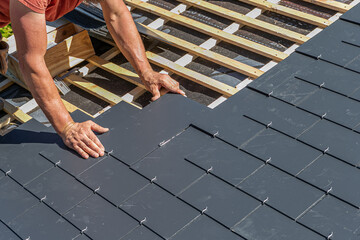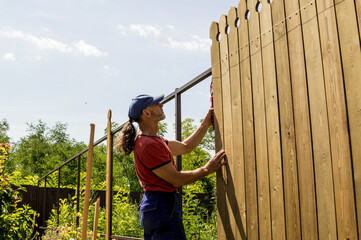Roofing Services Kalispell Montana include the installation, repair, and maintenance of roofs on buildings. They can also help with the design and building of new roofs. They can help with insulation and prevent water damage from storms.
Roofers need to have excellent customer service skills and be comfortable working at heights. They also need to have good carpentry skills.
Insulation is an essential part of a roof, protecting it from heat and moisture. It keeps warm air from escaping during winter and cool air from entering your house during the summer. It also reduces energy bills and prevents molds from forming in your home. It is important to choose a roofing company with experience installing insulation. Different types of insulation are available, including blankets, boards, and spray foam. Some can be installed by homeowners, while others require professional installation. It is important to choose the right type of insulation for your needs.
An insulating material creates barriers for transmission of heat, cold, electricity, shock or sound between insulated surfaces of adjacent bodies. The effectiveness of a given insulation is typically measured in terms of its thermal resistance or R-value, with higher values providing greater insulating effectiveness.
During a reroofing job, your roofers will likely install new insulation in your attic. This is because your roof is a major source of heat loss. The R-value of your attic should be based on the prevailing climate conditions and the heating and cooling requirements of your home.
In cold climates, R-values of attic insulation should be above 40 to 50, while in hot climates, they should be above 50. These temperatures are optimum for reducing heating and cooling costs and maximizing the life of your roof.
There are several different types of insulation materials available, with each type having its own unique properties and uses. Blanket insulation is the most popular, consisting of fiberglass batts that can be purchased in varying R-values. Other options include cellulose, mineral (rock and slag) wool, plastic fibers and natural fibers such as cotton or sheep’s wool. Rigid foam insulation, sometimes referred to as foam board, is another option. It is made of foamed polyurethane or spray polyurethane and is often installed in joist areas, around wiring and ductwork, and in walls.
Other types of insulation include reflective foil-faced insulation and combination materials. Reflective insulation is made of shiny aluminum foil laminated to paper or plastic and is usually referred to as wall wrap or sarking. It is primarily used in homes with sunny climates to reduce radiant heat gain during the summer, but it can also be effective in other areas. Combination materials are often used in attics, where the bulk insulation helps to stop the convection of heated air during the winter.
Curb Appeal
A well-maintained, visually appealing roof contributes greatly to the curb appeal of your home. This is a crucial factor when selling your property, as it creates an excellent first impression for potential buyers. It also helps to boost your property value and increase the number of buyers. Furthermore, curb appeal increases the overall ambiance of your neighborhood, which makes for a welcoming place to live.
Curb appeal refers to the aesthetic appearance of a house from the outside, including the landscaping, exterior paint color, driveway, sidewalks, and walkways. This first impression can determine whether or not a person will want to see more of the house. For example, if the outside looks run-down and unattractive, people will be less likely to inquire further. However, if the outside looks clean and well-maintained, it will give off the impression that the inside will be similarly attractive. This halo effect can help to reduce the time a home spends on the market and maximize the return on your investment.
Many homeowners are concerned about how their home’s curb appeal might impact its value, especially if they plan on selling it in the future. Fortunately, there are several simple ways to improve your home’s curb appeal without spending a lot of money. For example, you can replace old or damaged windows, spruce up your garage door, and even touch-up the paint. In addition, you should be sure to keep your gutters in good condition and regularly wash your siding to prevent stains and odors.
Aside from a new paint job, the most significant improvement you can make to your home’s curb appeal is a quality, stylish roof. A new roof can instantly elevate your home’s exterior design, making it look more appealing to passersby and potential buyers. A new roof will also add to your home’s energy efficiency and can significantly improve its overall value.
Ultimately, curb appeal matters because it reflects the overall quality of a home and can affect the amount you will get for your property when it comes time to sell. At Gale Force Roofing & Restoration, we understand the importance of curb appeal and can assist you with your home’s maintenance and renovation needs. Contact us today to learn more about our services.
Safety
The roof is an important element of the building structure, but it can also be a dangerous place to work. Roofing contractors need to have the right training and equipment to avoid injury on the job. Ladder safety is a key component of this training, as well as fall protection, which should include the use of harnesses and lifelines to prevent falls. Workers should also wear appropriate clothing to ensure they don’t get caught on tools or shingles while working at heights.
Another aspect of safety is ensuring that the work area is clean and free of potential hazards. A roof undergoing construction or repair can quickly become littered with debris, including tools, discarded materials and trash. This can create tripping or falling hazards, and can also make it difficult for workers to see the areas they are working on. A good way to reduce these risks is to clean as you go, rather than waiting for the work area to be cleaned up when the project is finished.
Other safety aspects of roofing services are identifying and controlling hazards, and emergency response procedures. Using a tool like SafetyCulture can help provide the necessary training to ensure that employees know how to respond in an emergency. Training can also be used to identify and mitigate hazards before they cause an accident, which can save lives.
Lastly, the use of a multi-layered approach to control hazards can greatly reduce injuries and accidents on the job. This includes eliminating or substituting hazardous tasks with safer alternatives, engineering controls and administrative controls. This can help to eliminate or minimize the risk of accidents and injuries, which will ultimately improve productivity and the bottom line.
Investing in safety isn’t just a box to check on a project list; it is an investment in the safety of your team and the success of your business. Contact a safety consultant today to learn more about how Industrial Compliance & Safety can help you elevate your construction projects to new heights of safety and success.
Reputation
A well-maintained roof is one of the most important parts of any home. Not only does it protect the home’s interior, but it can also increase its resale value and curb appeal. Roofing services can help homeowners choose the right materials for their roofs, as well as provide advice on how to maintain them. They can even make recommendations on how to make the home more energy-efficient.
A solid reputation is the key to success for any business, and roofers are no exception. Many consumers rely on online reviews to determine which contractors to hire, and a strong online presence is essential for growing your business. However, it’s important to remember that not all online reviews are created equal. While positive reviews can boost your business’s credibility and trustworthiness, negative reviews can be very damaging if left unchecked.
Having a strong reputation can also help you secure new construction projects, which can be very lucrative for roofing businesses. This is because architects, builders and developers prefer to work with companies that have a solid reputation in the industry. Moreover, a strong reputation can help you gain the trust of customers and secure referrals. This is why it’s crucial to focus on providing top-notch customer service and maintaining clear communication channels.
Finally, a solid business plan is crucial for any roofing company. It provides a clear direction and helps ensure that all team members are on the same page about their goals and strategies. It can also help you obtain financing and other resources, as lenders and investors will be more likely to trust a business that has a clear vision of its future.
If you want to improve your roofing business’s reputation, start by focusing on customer service. Be sure to offer prompt and thorough responses to complaints and concerns, and always strive to deliver high-quality work. Additionally, it’s important to maintain consistent communication with clients to keep them updated on project progress. This will help to prevent any unexpected issues from arising during the installation process and ensure that all client needs are met.

 Fencing is a major anthropogenic feature that affects wildlife distributions and movements, yet many studies have focused on individual fences rather than on how they interact with whole landscapes. This gap in knowledge hinders wise use of fencing to protect humans and wildlife.
Fencing is a major anthropogenic feature that affects wildlife distributions and movements, yet many studies have focused on individual fences rather than on how they interact with whole landscapes. This gap in knowledge hinders wise use of fencing to protect humans and wildlife.